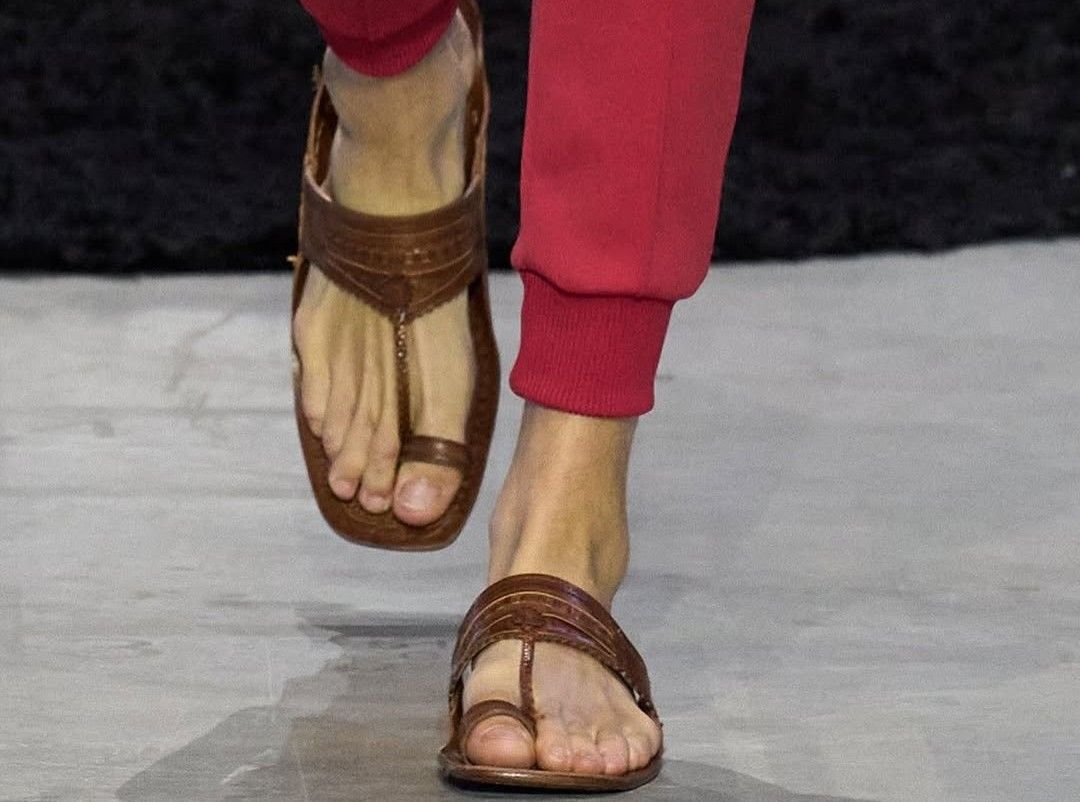Italian fashion house Prada recently unveiled a pair of brown sandals at Milan Fashion Week. The toe rings and detailed stitching looked almost identical to Kolhapuri chappals, traditional handmade footwear from India. Marketed as a novel luxury item, Prada initially failed to acknowledge any ties the sandals had to Indian culture. People were quick to call out Prada for cultural appropriation and design theft.
The backlash prompted Prada to issue a statement that recognized the sandals’ Indian roots and even announced plans to work with Indian artisans for future collaborations. That’s a start.
Cultural Appropriation or Missed Opportunity?
This isn’t the first time a luxury fashion house has borrowed from Indian culture without acknowledging the source of their inspiration. Gucci’s $790 “Indy Full Turban,” Reformation’s lehenga-inspired dresses, H&M’s salwar kameez knockoffs, and Bipty’s viral dupatta shawls have all drawn criticism for appropriating or misrepresenting Indian culture.
These missteps are part of a troubling trend: Indian aesthetics are seen as exotic and profitable, but Indian designers and artisans are rarely credited or compensated. The irony is that India is where many garments are produced, where it’s a major center for textile production.
The Global Market Demands More
This kind of erasure is becoming increasingly unsustainable. India’s luxury market is expanding as a diverse, brand-conscious population craves something that respects their heritage, not exploits it. Indian and South Asian designers are demanding a seat at the table, all while fighting to be recognized for their talent and innovation rather than their ethnicity.
Consumers today expect transparency, equity, and collaboration. They want to see artisans properly credited, cultures honored, and brands held accountable.
It’s not like respectful engagement is impossible. Dior’s stunning show featuring Indian artisans and Nike’s partnerships with Indian designers are often held up as examples of how to do things right.
What Should Brands Like Prada Actually Do?
Apologies are fine but if fashion wants to move beyond appropriation and into appreciation, it needs to do more. They need to build real systems that hold them accountable and demand respect for different cultures. Here’s what that looks like:
- Cultural education: Designers and creative teams should understand the full context of the symbols and styles they borrow from.
- Collaborate with consultants: Work directly with artisans and designers who are a part of the cultures being used for inspiration.
- Transparency: Clearly credit the origin of cultural designs in product descriptions, marketing, and runway presentations.
- Fair compensation: Pay artisans fairly and ensure they benefit materially from their own traditions.
- Know where to draw the line: Some designs aren’t meant to be sold at all. Brands need to learn where the line is and respect it.
- Long-term partnerships: Engage in ongoing dialogue, not one-time campaigns or superficial collaborations.
- Admit when you mess up: If you make a mistake, own it publicly and do the work to repair the damage. Specifically the people who’ve been hurt, not just to your reputation.
Culture Is Not a Moodboard
There’s nothing wrong with drawing inspiration from other cultures, as long as you’re being respectful. Fashion has always been global and a powerful way to celebrate creativity. When billion-dollar luxury brands profit from designs rooted in communities they barely acknowledge, celebration turns into exploitation.
Prada’s Kolhapuri sandal debacle is another reminder that brands can no longer afford to treat culture like a trend. Diverse teams, deeper education, and meaningful collaboration are necessary. Especially in a world where customers are demanding more than just style. They want substance and respect, too.






